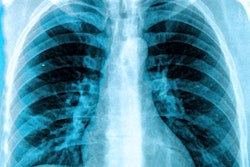
Despite the slowdown in imaging utilization growth over the past 10 years, not everyone is satisfied. In fact, at a recent meeting of the Medicare Payment Advisory Commission (MedPAC), imaging figured prominently in a presentation that assessed the number and cost of low-value medical services.
Presenter Ariel Winter, principal policy analyst for MedPAC, described how in 2014 almost 40% of Medicare beneficiaries received at least one low-value service -- resulting in $6.5 billion spending on these services. Imaging definitely contributed to the bill: For example, imaging for nonspecific low back pain cost Medicare $232 million in 2014, he said.
Winter defined "low-value care" as services with little or no clinical benefit, or those that carry risks that outweigh potential benefits.
"Low-value care is a concern for two reasons," he said. "First, it has the potential to harm patients, both directly by exposing them to the risks of injury from the service itself and indirectly, when the initial service leads to a cascade of additional tests and procedures that contain risks but provide little or no benefit. It may also displace higher-value care. And second, it increases healthcare spending."
Measuring low value
For his analysis, Winter used claims-based measures of low-value care, mining Medicare claims data from 2012 to 2014. He assessed the volume of and spending on low-value care, as well as geographic variations, and suggested possible policy actions to take going forward.
Winter incorporated 31 measures outlined in a 2014 study published in JAMA Internal Medicine to determine low-value medical services. The measures are based on Choosing Wisely guidelines, recommendations from the U.S. Preventive Services Task Force (USPSTF), and the medical literature, and there are two versions: broad (higher sensitivity, lower specificity) and narrow (lower sensitivity, higher specificity).
In 2014, from the broader measure perspective, 37% of Medicare beneficiaries received at least one low-value service, which resulted in $6.5 billion in spending, he found. From the narrower measure perspective, 23% of beneficiaries received at least one low-value service, resulting in $2.4 billion in spending.
Imaging certainly made the list of services that account for most volume and spending, according to Winter.
| Types of low-value care that produce the most volume and spending | ||
| Broad measures (higher sensitivity) | Narrow measures (higher specificity) | |
| Categories that comprise most volume | Imaging | Imaging |
| Cancer screening | Diagnostic and preventive testing | |
| Categories that comprise most spending | Cardiovascular tests and procedures | Other surgical procedures |
| Other surgical procedures | Imaging | |
Some of the specific imaging procedures on the low-value list in the 2014 study were as follows:
- CT of the sinuses for sinus infection
- Head imaging in the evaluation of loss of consciousness
- Head imaging for uncomplicated headache
- Back imaging for patients with nonspecific low back pain
- Screening for carotid artery disease in asymptomatic adults
Unfortunately, MedPAC's analysis probably understates the volume of and spending on low-value care, according to Winter.
"Spending estimates for low-value care don't include downstream services that result from the initial service," he said.
Geographic concerns
As for geographic variations, Winter's analysis (this time using only the narrower, more specific versions of the 31 care measures) found that the number of low-value services performed was 61% higher in geographic areas at the 90th percentile, compared with those at the 10th percentile (calculated by number of services per 100 beneficiaries).
| Areas with the most low-value services per 100 beneficiaries in 2014 | |
| Geographic area | No. of low-value services per 100 beneficiaries |
| Yuma, AZ | 56 |
| Punta Gorda, FL | 53 |
| Miami-Fort Lauderdale-W. Palm Beach, FL | 51 |
| Ocala, FL | 51 |
| Sebastian-Vero Beach, FL | 51 |
| Naples-Immokalee-Marco Island, FL | 49 |
| Beaumont-Port Arthur, TX | 48 |
| Hammond, LA | 47 |
| New York City-Newark-Jersey City, NY | 47 |
| Sumter, SC | 46 |
The national mean across all of the geographic areas in Winter's analysis was 32 low-value services per 100 beneficiaries. However, the use of low-value services was 182% higher in the area with the most low-value services performed per 100 beneficiaries than in the area with the least, he said.
Going forward
Can changes in payment policy and healthcare delivery systems influence the use of low-value care? Winter suggested a number of changes policymakers could make, including payment and delivery system reform via accountable care organizations (ACOs), quality measurement initiatives, modifications to Medicare's payment and coverage policies, and increased beneficiary engagement -- such as cost sharing via co-pays and shared decision-making.
"The commission supports value-based insurance design, in which the [U.S. Department of Health and Human Services] secretary could alter cost-sharing based on evidence of the value of services," he said. "Under this approach, cost sharing would encourage beneficiaries to use high-value services and discourage the use of low-value services."
ACOs seem particularly promising, according to Winter. He cited another study by the same lead author as the 2014 research, Aaron Schwartz, PhD, from Harvard Medical School's department of healthcare policy. That research found ACOs to be effective in reducing the volume of and spending on low-value services (JAMA Intern Med, November 2015, Vol. 175:11, pp. 1815-1825).
Schwartz's 2015 study found that "ACOs prompted a 1.9% reduction in volume and a 4.5% reduction in spending for low-value care relative to the control group," Winter noted. "These results suggest that changing financial incentives at the organizational level can discourage overuse."




















